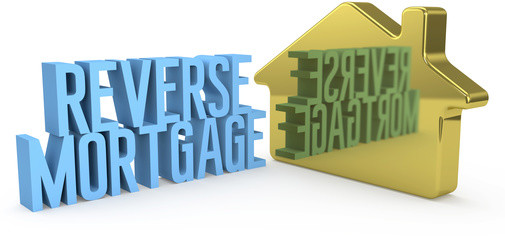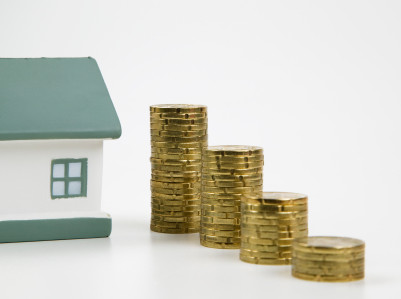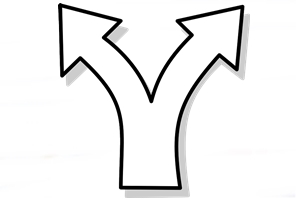Reverse Mortgage Rates Canada
The lowest reverse mortgages rates from major lenders like CHIP (HomeEquity Bank), PATH (Equitable Bank) and top brokers.
A reverse mortgage is a loan that pays you cash, requires almost no proof of income and entails no payments until you leave your home.
What is the best reverse mortgage rate?
 The answer to that depends on what term you prefer. A 5-year fixed reverse mortgage rate, for example, is usually at least two-thirds of a percentage point greater than a variable or 1-year fixed. The longer the term, the higher the rate.
The answer to that depends on what term you prefer. A 5-year fixed reverse mortgage rate, for example, is usually at least two-thirds of a percentage point greater than a variable or 1-year fixed. The longer the term, the higher the rate.
Given the same term, however, there’s not much difference in rates between lenders (at least not at the time of this being written). That’s because there’s very little competition in Canada’s reverse mortgage market. The two leaders in the industry, HomeEquity Bank and Equitable Bank, price very close to one another so as to maximize margins.
Below are some of the more frequently asked questions about reverse mortgages…
What is a reverse mortgage?
A reverse mortgage is a loan that allows seniors to access the equity they’ve built up in their homes. It pays homeowners tax-free cash with no required monthly payments.
People get them for any number of reasons:
- Funding or supplementing their retirement
- Debt consolidation
- Avoiding clawbacks of government benefits
- Buying a cottage
- Renovations
- Healthcare
- Discretionary spending and travel
- Investing
- Gifts to children or grandchildren
- Emergency expenses.
In many cases a reverse mortgage allows the senior to remain in his or her home, when they otherwise would have been forced to sell.
How does a reverse mortgage work?
 Reverse mortgages are easy to qualify for if you meet the minimum age requirement and have a marketable home with lots of equity. You can choose to receive your funds as either a lump sum or spread out over multiple instalments. Payments are never required until the homeowner moves or passes away, and one can never owe more than the home is worth.
Reverse mortgages are easy to qualify for if you meet the minimum age requirement and have a marketable home with lots of equity. You can choose to receive your funds as either a lump sum or spread out over multiple instalments. Payments are never required until the homeowner moves or passes away, and one can never owe more than the home is worth.
The amount of equity that can be taken out of a home through a reverse mortgage depends mainly on five things: age, location of the home, property type, sex and number of homeowners.
According to reverse mortgage advisors at SeniorsEquity.ca, the minimum home value must be no less than $150,000 and it takes about a month to close the average loan.
What is the minimum age for a reverse mortgage?
Reverse mortgages are available to those aged 55 and older.
The loan amount depends heavily on your age and mortality tables, kind of like life insurance. Other things equal, the older you are, the more money you can get.
At the minimum age of 55, the approved amount will often be just 15-20% of your home value. For the maximum loan amount, all homeowners generally need to be over 80 years old.
In most cases, unless you’re well over 80, you’ll also get a slightly higher loan amount if you’re a single homeowner.
Who offers reverse mortgages in Canada?
There are currently just two mainstream Canadian reverse mortgage providers.
The best known is HomeEquity Bank, which offers its CHIP reverse mortgage. HomeEquity Bank was the country’s first reverse mortgage lender.
Equitable Bank is a newer competitor, having launched in 2018. It offers the PATH reverse mortgage.
How much have reverse mortgages grown in Canada?
Reverse mortgage balances are growing nearly eight times faster than regular mortgage debt in Canada, according to the Office of the Superintendent of Financial Institutions. In 2017, Canadian reverse mortgage balances rose to $2.69 billion—a whopping 45% increase from the year before.
In 2017, HomeEquity Bank reported growth of 32.5% over 2016, with total reverse mortgage originations of $608 million. They’re projecting to close more than $800 million worth in 2018.
On a per capita basis, that is still a small fraction of the business closed in more established markets, like the U.S. and Australia.
How high are reverse mortgage rates?
Reverse mortgage rates are substantially higher than standard mortgage rates. That’s because the lender has to wait roughly nine years on average to get its money back (remember, no payments are required).
Reverse mortgages are also more expensive to fund. For one thing, they’re funded by deposits—which are more expensive for smaller reverse mortgage lenders than big banks. Moreover, they cannot easily be securitized or sold to investors, which makes them less liquid assets for the lender.
For these reasons, it’s common to see reverse mortgage rates roughly three percentage points higher than regular mortgage rates of the same term. This is why some people view reverse mortgages as the loan of last resort. To be fair, however, there are many other types of mortgages (like sub-prime mortgages) that cost a lot more.
As of today there are just two main options for people needing a reverse mortgage: HomeEquity Bank (see chip reverse mortgage rates) and Equitable Bank.
What are the benefits of a reverse mortgage?
A reverse mortgage can be the difference between cash-strapped seniors being forced to sell, or being able to live out the rest of their lives at home. They’re also the only option many Canadians have for affording essential home upgrades or medical expenses.
One of the biggest fears seniors have when considering a reverse mortgage is the possibility of owing more money than the home is worth. This is understandable, considering many have spent their entire lifetimes paying off their mortgage in the first place. The last thing a senior wants to do is spend their final days in debt—or to leave their children with a large debt in lieu of an inheritance.
Fortunately, reverse mortgages are structured so that seniors can never owe more than their home is worth. This means that once the house is sold, the debt can be repaid, typically with money left over. In fact, HomeEquity Bank notes that the average homeowner has about 50% of their equity remaining when they pay off their reverse mortgage.
What are the risks involved with a reverse mortgage?
While you can never owe more than your house is worth, that’s not to say there’s no downside to getting a reverse mortgages.
While reverse mortgages require no monthly payments, that higher rate is still accumulating monthly interest and will eventually have to be paid back, most likely using the proceeds from the sale of the house. At current rates, the reverse mortgage debt doubles in about 11 years. This accumulation of interest can deplete much of your equity and possibly leave the homeowner with little remaining assets if they have to sell and move into a long-term care facility. That’s especially true if home values dive.
One more thing to keep in mind. If you pay off a reverse mortgage before five years, there is usually a penalty. Ask your lender for details.
What are the alternatives to a reverse mortgage?
The most obvious alternative to a reverse mortgage is simply for a senior to sell their home and downsize to a cheaper property. This, of course, isn’t practical in many cases.
Seniors should also consider lower-interest options, like a Home Equity Line of Credit (HELOC).
HELOCs come with an interest rate that’s usually 1.50 to 2.00 percentage points less and generally allow you to withdraw up to 65-80% of the value of your home.
The challenge with HELOCs is that they’re harder to qualify for, particularly for seniors on a fixed income. There’s also a chance the lender will freeze your HELOC borrowing if a spouse dies and/or you miss a payment and/or you never make any principal payments.
What is the future of reverse mortgages?
With an aging demographic and more seniors expected to require supplemental retirement income, reverse mortgage volumes will only grow from here.
“As the…population continues to age, there is clear demand among Canadians aged 55 and older to unlock the equity they’ve accrued in their homes,” said Steven Ranson, CEO and President of HomeEquity Bank. “…proactive equity release is a more attractive solution than ever for Canadians planning for retirement.”
With rates over 6%, however, we would not necessarily agree that it’s the best time “ever.” After all, reverse mortgage rates were just 4.99% in 2016.
 Reverse Mortgage Tips
Reverse Mortgage Tips
If you or a loved one are considering a reverse mortgage, here are some thoughts to consider:
- Make sure all options have been thoroughly evaluated and exhausted before committing to a reverse mortgage. In many cases, downsizing, getting a trustworthy roommate or getting a HELOC are preferable cash-flow solutions.
- Use a reverse mortgage broker instead of dealing direct with the lender. Not only will you pay the same through a broker (or sometimes even less), but a mortgage broker can compare all providers to recommend the lowest-cost solution. You cannot get objective advice by dealing with the lender directly. Brokers will also complete a comprehensive review of your financial situation to help determine if a reverse mortgage is even right for you in the first place.
- Before signing any contracts, make sure you and your family are crystal clear on the terms of the mortgage and the costs involved. Once you initiate a reverse mortgage, it’s unlikely you will be able to change your mind and repay the loan unless you sell the property. All reverse mortgage companies require that a lawyer/notary be involved to ensure any contracts and obligations are fully understood.
* Please note: The setup fees shown on this page are estimates and do not include independent legal advice (ILA), which is required by all lenders. That cost of ILA can vary depending on your lender but it’s often $400, give or take $100.
| Rate Hold | |
| Lump Prepayments | |
| Payment Increase | |
| Double-up Payments | |
| Permitted Loan-to-Value | |
| Pre-approvals | |
| Provider Type | |
| Provinces Served |
| Last Updated | |
| Previous Update | |
| Prior Rate | |
| Latest Rate Change | |
| Rate ID # |
Provider Notes
Rate Notes
By clicking "Ask Question”, I give permission to RateSpy to transfer my information and contact details to third party brokers in order to complete the purchase of mortgage rates. RateSpy values your privacy. For details, see our privacy policy. Mortgage rates listed are subject to change at any time and apply to those with approved credit. Please contact the mortgage provider directly for more information.
 log in
log in

 What are the risks involved with a reverse mortgage?
What are the risks involved with a reverse mortgage? The most obvious alternative to a reverse mortgage is simply for a senior to sell their home and downsize to a cheaper property. This, of course, isn’t practical in many cases.
The most obvious alternative to a reverse mortgage is simply for a senior to sell their home and downsize to a cheaper property. This, of course, isn’t practical in many cases.